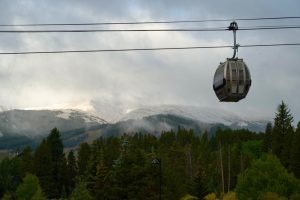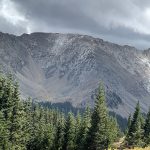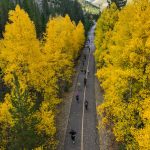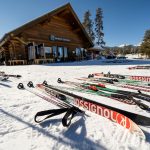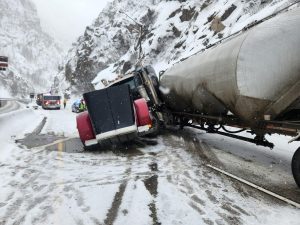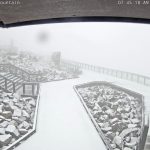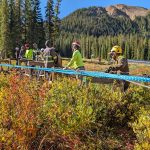Top 5 most-read stories last week: Chain law violations, snow outlook and personal locator beacons
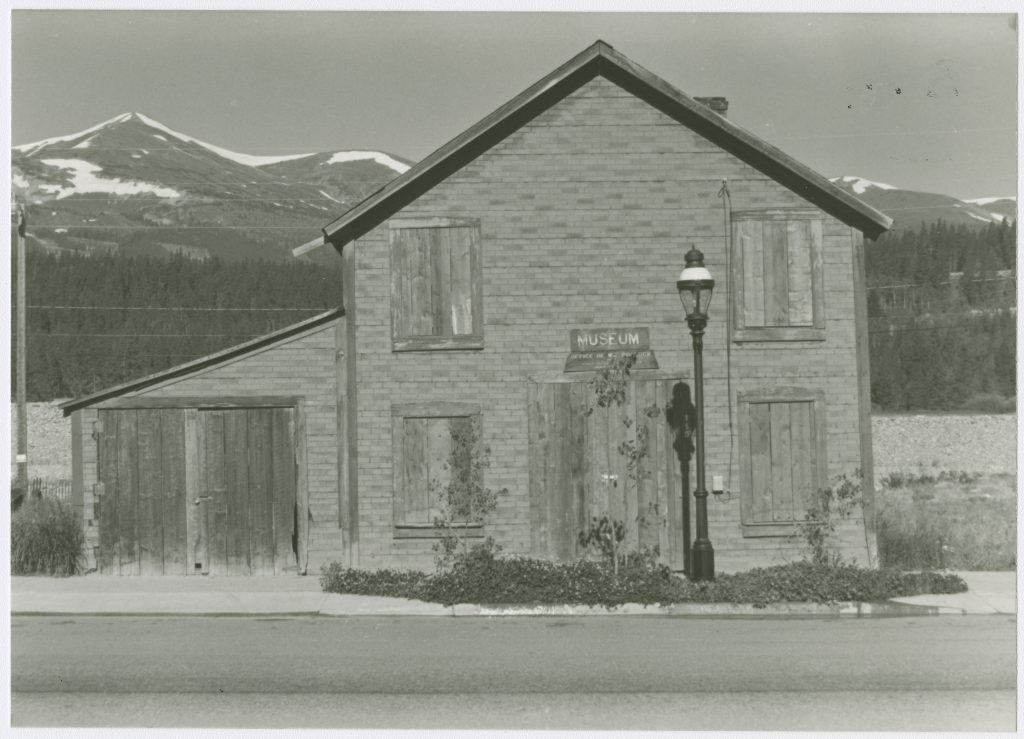
Breckenridge History Archives/Courtesy photo
Stories in this list received the most page views on SummitDaily.com from Sept. 7-13.
1. Colorado troopers issue 49 chain law violations, stop 2 drivers without commercial driver’s licenses on I-70 during enforcement operation
With the winter season right around the corner, Colorado law enforcement officers this week began enforcing the state’s commercial vehicle chain law.
The Colorado State Patrol and Colorado Port of Entry Officers conducted the first chain law enforcement operation of the season on Thursday on Interstate 70 near Dotsero, according to a news release.
Colorado’s commercial vehicle chain law and passenger vehicle traction laws went into effect Sept. 1, requiring commercial vehicles to carry chains and passenger vehicles to have proper traction devices. The winter driving laws remain in effect through the end of next May.
The enforcement operation contacted 410 commercial vehicles and resulted in a total of 49 violations for failing to carry chains, the release states. That’s about 88% compliance with the chain law among the vehicles stopped.
Under state law, a violation of the commercial vehicle chain law can result in a fine of up to $500, increasing to up to $1,000 if the vehicle is stuck and blocking traffic.
— Ryan Spencer
2. Satellite SOS signals from ‘PLBs’ have sent Colorado search-and-rescue officials to thrift stores, landfills and even a zoo. But most are false alarms.
Colorado search-and-rescue officials have been chasing satellite SOS signals around the state, sometimes tracking them to thrift stores, landfills and other bizarre locations.
Personal locator beacons, often called PLBs, allow backcountry travelers to signal for help by bouncing an alert off satellites. Only, in recent years, the portable, battery-powered devices — which are different from satellite communicators like the Garmin InReach — have been sending off distress signals when nobody is in danger.
“The vast majority of PLB activations are incidental activations, whether that is through device malfunction, through misuse, through accidental activation,” said Jay Christianson, a public information officer with the Colorado Search and Rescue Association. “The list of reasons they get activated is quite large, but the vast majority are incidental.”
So far this year, rescuer volunteers in Colorado have been notified of 24 alerts from personal locator beacons, only two of which turned out to be for real emergencies, according to the rescue association.
That is more alerts from personal locator beacons than the Colorado Search and Rescue Association received in all of 2024, when it received notice of 23 personal locator beacon activations, only three of which involved real incidents.
— Ryan Spencer
3. Immigrant advocacy groups weigh in on rumors of federal immigration officials and ICE presence in Summit County
The suspicion that federal immigration agents could be active in Summit County this week spread throughout the county starting on Monday, Sept. 8.
A message shared by Mountain Dreamers, a Summit County-based immigrant advocacy nonprofit, stated Immigration and Customs Enforcement agents could be planning operations in the county for Thursday, Sept. 11. Another immigrant advocacy nonprofit, Voces Unidas, posted on Facebook Sept. 8 that it had heard a rumor in Summit County about a “possible ICE operation” on Sept. 11. President Alex Sanchez said there was “no evidence” to support the claim.
Executive director Peter Bakken said his group heard over the weekend that federal agents had been looking for a place to stage a law enforcement operation in the county, planning for it to take place Sept. 11.
“This was sometime last week,” Bakken said. “I don’t know what they were planning.”
Mountain Dreamers removed its post and shared another Sept. 8 that stated the Dillon Ranger District offices in Silverthorne “will not be utilized by Federal Migration Agents,” but agents are likely to use another location.
— Kyle McCabe
4. Colorado’s highest peaks are starting to see snow — but summer isn’t over yet
Colorado’s highest peaks are starting to get dustings of snow as wetter, colder weather has pushed into the mountains after a hot, dry summer.
Meteorologist Seth Linden — who runs Seth’s Weather Report, a popular Facebook page that provides mountain forecasts — said the reports of snow on Colorado’s 14,000-foot peaks are coming right on schedule.
“We’re just getting started,” Linden said. “It’s, of course, not uncommon this time of year to have these weak upper-level snows as the jet stream starts to come in and it’s raining at lower elevations and it’s snowing up top. That’s classic fall in Colorado.”
One of the first reports of snow came in Sept. 5 from Pikes Peak, the tallest mountain on the Front Range, with a webcam on the mountain showing the visitor area and parking lot at the top of the 14,111-foot peak covered in white.
And rainy, cold weather across much of the state late this week led to more reports of snow.
From Frisco Main Street on Thursday evening, a wisp of snow could be seen on the peaks of Grays and Torreys — two 14,000-foot summits — as it rained in town. By Friday morning, traces of snow were also being reported on the Maroon Bells, Pyramid Peak and Capitol Peak near Aspen, and in the San Juan Mountains further south.
Most of the snow this week appeared to fall above 12,000 and 13,000 feet, Linden said. He said precipitation is expected to continue Saturday afternoon with more chances for snow in places like Summit County’s Tenmile Range and the Collegiate Peaks in Chaffee County.
Like many Coloradans, Linden said the first snow of the season has him dreaming of the ski season, which he said he expects to be a good one, based on the long-term forecasts he’s seen so far.
— Ryan Spencer
5. A history of Breckenridge’s saloon scene: From the ‘raucous’ mining era through the modern ski industry
Walk down Breckenridge Main Street on any given night and people will be coming and going from the town’s many different bars and restaurants.
While Breckenridge has changed a lot since its mining days, the town’s historic saloons offer the possibility to experience a taste of what the social scene may have been like more than 100 years ago when a gold rush brought miners flooding into the area.
“Saloons in our early days of our mining community — and you could probably even say it is true today — were the centers of the community,” Breckenridge History interpreter Leigh Girvin said. “Often the saloon was one of the biggest buildings in these front ier towns. They became gathering places for people coming from all over the place to mine in our area.”
The first saloons
Breckenridge’s history dates back to the late 1850s, when the discovery of gold in the Colorado Rocky Mountains brought thousands of men to the region to mine for gold with the hopes of striking it rich, Girvin said. Gold was first discovered along the Blue River that flows through Breckenridge in 1859, near where the City Market now stands, she said.
With the discovery of gold, the town of Breckenridge began to pop up with settlers from the east building modest log cabins for shelter. But “you can’t eat gold,” Girvin said, so along with the miners came merchants selling food, wares and services.
The most lucrative businessmen in Breckenridge’s early days were “those who mined the miners,” Breckenridge History public engagement manager June Walters said. Saloons were some of the very first businesses to be established in Breckenridge, Walters said, noting that one of her distant relatives owned a saloon on Main Street back in the 1880s.
— Ryan Spencer

Support Local Journalism

Support Local Journalism
As a Summit Daily News reader, you make our work possible.
Summit Daily is embarking on a multiyear project to digitize its archives going back to 1989 and make them available to the public in partnership with the Colorado Historic Newspapers Collection. The full project is expected to cost about $165,000. All donations made in 2023 will go directly toward this project.
Every contribution, no matter the size, will make a difference.

